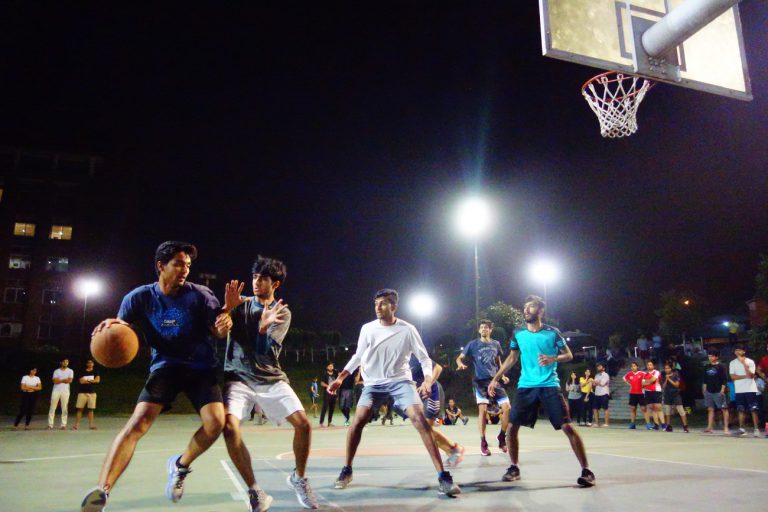The many avatars of English
A few years back, I had a student of mine writing an email to me, asking for a relaxation in the assignment deadline. He wrote to me Dear Mam, my return ticket was cancelled because my grandmother fell seek…’ In the class, I asked him to re-read this and he did not find any problem and neither did any of his peers.
My class was a bag of low proficient English language speakers. And quite interestingly, this is the kind of group that can tell us what is wrong with the English language. There is very little to complain, because as per his logic, seek and sick sounds quite similar to him, and so does return and written.
The problem starts with the teaching style; often a teacher’s native language influences the way in which he/she pronounces English. My student was a Bengali, so was his teacher who quite did not clearly distinguish between sick and seek. The idea is not to point fingers, but to understand that this may be a cultural intervention and the best we could do is to rectify this or put up with it. The similar case happens with ‘teeth’ and ‘tit’. I have had numerous Bengali students pronounce the former as ‘tit’. They exhibit the failure to distinguish the difference between the long and short vowels, and naturally, this made the student a laughing stock of the class.
Yet another student told his friend ‘I had cold/called’. I was not sure which was the right word he used; cold or called. Several other times too, I have heard him say something and not quite clearly understood what he meant. Knot/note, spock/spoke, joke/jock, known/non, roll/role– are pronunciations that distinguish a Malayali from other speakers. The problem evidently stems from the Malayalam speech repertoire. The Malayalam language has a big repertoire of double consonants, all of which are pronounced with a stress, as in sunny. You will most likely hear a Malayali speaker pronounce the two nns of sunny, in a speech sound that is not present in English. This sort of stress does not take place in English just because there are double consonants. Similarly, cat is pronounced kyat, cancel as kyancel etc. The problem is, æ is the vowel that the Malayalam speech collection system lacks and therefore the speaker is left to deal with these words in a way that resembles the original. I tried correcting my student, but he simply told me he could not perceive the speech sound difference (the difference between the aw sound in spo(aw)k and spo(o)ke).
At another instance, I was participating in a farewell party with my classmates. I was carrying food and walking around, while a friend, who was sitting down looked at me and said shit down. I was baffled. I asked her again and she said the same. When she saw the bewilderment, she made it more casual and said ‘aree sit down’. I was convinced. The problem was that she was over-generalizing. She believes that she has to substitute the sound sa (as in sap) with a sh (as in Shah). She was an Odia speaker.
My mother who speaks Tamil says Chachin for Sachin and gulucose for Glucose. Tamil as a language lacks the s sound, and the consonant cluster such as gla, thra, kra etc. Her close friend’s name is Chitra and she calls her Chitira, because Tamil does not have speech sounds that clubs two or more consonants together. She does not even realize she pronounces it that way until we tell her so.
This is true of even Japanese speakers who cannot perceive the difference between l and r because Japanese language does not use these sounds in a way that changes the meaning when you use them interchangeably.
The most influential factor here is how the mother tongue interferes with the pronunciation of English language speech sounds. Learners are innocent and they freely bring in different accents of their first language into English. However, the teacher needs to be familiar with the sound system so that he/she can diagnose this.
The problem in any of these cases lies with the language and its speakers. A very simple way to understand this is to look at it as the effort of the speaker to arrive at a close match to the uttered sound/word. When a speech sound of a language lacks a particular sound, the reader always tries to hit the correct match. It is only the close match, but never the right match, unless the learner is explicitly introduced to this difference at his/her early age.
Eric Lenneberg argued that language acquisition needed to take place between age two and puberty – a period which he believed to coincide with the lateralisation process of the brain. Several studies have shown that language learners who are exposed to and start learning different languages early in life undoubtedly tend to outperform the later learners. This is the evidence of ‘age’ being a crucial factor in determining the speed and efficiency of language acquisition and this is famously known as the ‘critical period’ in Linguistics. Critical period is a concept that states that much of the language learning and acquisition happens between the age of two and until puberty. However, this does not mean that someone cannot learn a new language outside his/her after puberty years, but only with much consciousness and effort. Child learners of second language are thus more susceptible to the contrasts in the sound, when compared to grown up second language learners. And this probably explains why my Malayali student failed to see any difference in pronunciation in spock and spoke.
New-borns or infants are known to perceive all the speech sounds of the world; roughly about 600 consonants and about 150 vowels. However, by the sixth month, they tend to fall into what is known as perceptual narrowing. That is, they will no longer be able to tell apart the difference between two sounds when it does not signal a change in meaning. For instance, a child learning the different types of ‘t’ in English will not be able to acutely distinguish between the dental t (as in theta) and the alveolar t (as in tumbler), something that exists in Malayalam and some other Indian languages. Also, this is a gradual step, with the infant first losing the ability to distinguish non-used vowels of their language and then the consonants.
Therefore, several factors affect why someone pronounces words the way they do. Firstly, of course, their tendency to try to find a near match, a clear attempt at trying to sound just like the original. My Malayali students are most often convinced that they are pronouncing it right. But as a teacher, I am not. Second, schools and their teachers have a huge role to play in this. Teachers bring in local cultural interventions into English pronunciation. However, neither the teacher, nor the student realise they are being taught something wrong.
Training the tongue to pronounce and sharpening the ears to perceive the different speech sounds need to begin early and in most cases, have to be supervised by a speaker of a different language. However, this comes at a cost. While trying to attain perfection, we are essentially steer clearing English off any first language effect, thereby demotivating the new learners of the language. Most often, it is this native language that makes the learning process easier, because most of the speakers tend to understand, relate and seek support when learning anything new. Language thus has an impact on a wide domain of our learning and a significant impact in our formative years.
References
Saffran, J. R., & Sahni, S. D. (2012). Learning the sounds of language. Cambridge handbook of psycholinguistics.
Blakeslee, S., (1992). Babies Learn Sounds of Language by 6 Months. The New York Times.
Jackchubby (2015). English pronunciation features of Malayalis. Hubpages.
Vanhove, J. (2013). The critical period hypothesis in second language acquisition: A statistical critique and a reanalysis. PloS one, 8(7), e69172.
Lenneberg, E. H. (1967). Biological Foundations of Language, New York (Wiley) 1967, pp. 29, 72, 76, 126f., 139f., 168-170, 178-182, 219-223, 227-234, 243, 248, 255-261, 329-337, 357-367, 371-379, 397-416.
Picture Credits: The Indian Express







